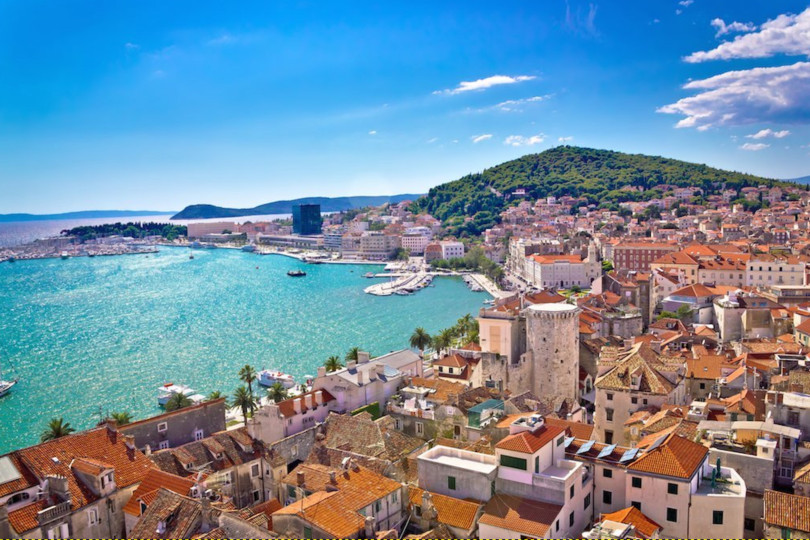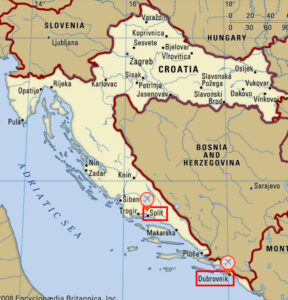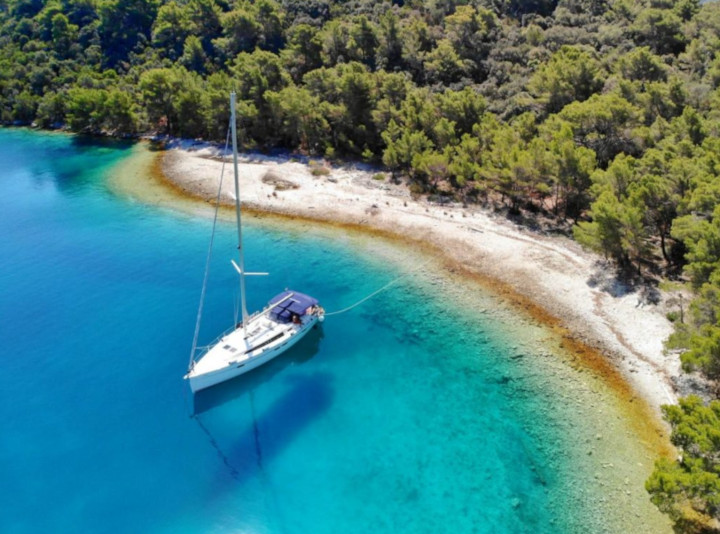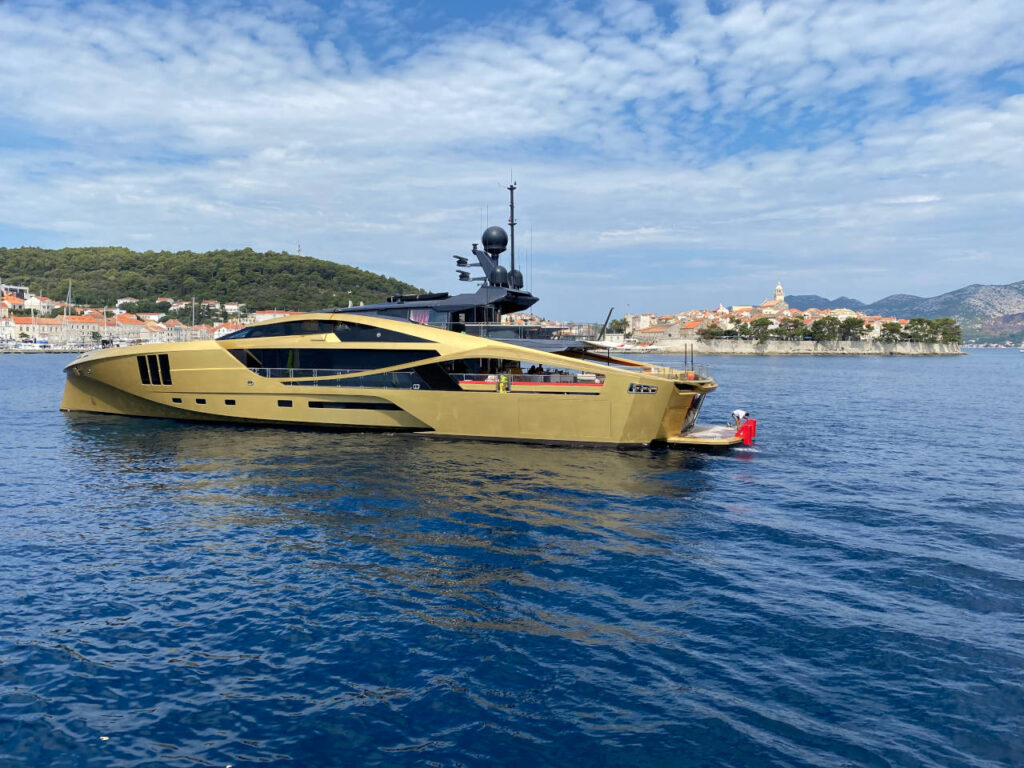The south of the country is currently the most popular destination on the Croatian coast. With good reason: the large islands have their very own flair
Most crews arrive via Split or Dubrovnik airports, which are easy to reach by plane from any part of the world as connectivity with these airports is great. Transfers to charter bases usually take only 20-30 minutes, mostly from Split to Kastela or Dubrovnik to the ACI marina. By car, it’s almost 900 kilometers from Munich to the south of the area, for example to Kastela near Split. Accordingly, only a few will consider the Flixbus as an alternative, which runs directly from Munich, for example, but takes almost 15 hours.
Yacht Charter
The most used port of departure is Split, where Marina Kastela is the largest charter port of departure on the entire coast. There are also other bases in the surrounding area, for example in Trogir, Agana, or Rogoznica. If you want to start further south, you will choose Dubrovnik. There are a few other bases on the mainland, such as in Baska Voda, but they are rather unfavorable because of the longer transfers. However, the area is so popular that many crews who want to sail here can no longer get ships in the high season and then start from bases further north near Sibenik or Murter. The selection of fleets is huge, which means comparatively low prices compared to Europe, even if the south is currently in high demand.
Wind and Weather
In the summer months, the Maestral, light wind from the north-west, blows very often on the coast. It develops gradually throughout the morning and usually reaches 3 to 4 Beaufort in the afternoon. Towards evening he falls asleep again relatively quickly.
The Bora can bring strong winds and storms from the northeast, which can be particularly violent in the early and late seasons but is always good for surprises in summer too. Crews should seek shelter in good time if bora is forecast. It often blows in very clear, good weather. If in doubt, consult Croatian sources for critical predictions.
The so-called Jugo blows from the south, which almost always brings with it a deterioration in the weather with clouds and rain. It can also reach gale force but is generally not as gusty as the Bora. In summer it is rare, in the early and late season it often alternates with the Bora. Longer Jugo brings rough seas since he has a lot of approach distance across the Adriatic Sea.
The Croatian weather service predicts Bura and Jugo quite reliably. Otherwise, the usual online or app weather information sites such as Windy.com, Windfinder.com, and others are often used.
Navigation and Seamanship
The south is relatively uncomplicated in terms of navigation, there are slightly fewer shoals and the smallest islets and cairns than in the middle of the country. The larger distances between the offshore islands mean less protection than in the north, but the bora generally blows a little weaker here.
There are a large number of buoy fields in the area, which the state leases out to tenants and of which there are now around 70 to 80 throughout the country. Anyone who uses the buoys has to pay; prices vary from around 2 to 5 euros per meter of the boat, depending on the location and popularity of the field. Important: If you want to anchor, you have to keep a distance of at least 150 meters to the fields (previously 250 meters). There is occasionally a dispute about this rule: Some operators also try to collect crews who anchor near the fields. In such a case, you should keep your distance to avoid trouble.
Not all buoy ground gear is strong enough and well maintained. In Croatia, the operators are not liable for the condition of the buoys, so you should not blindly rely on them in bad weather.
Important in Croatia: The charter crew of the boat must have a radio license holder (SRC) on board, according to the regulation. It does not necessarily have to be the skipper, but it happens from time to time that a charter company demands this. And: If a dinghy is moved with an outboard engine, a person with a driver’s license must sit in it, no matter how much horsepower it has.
Harbor and Anchorage
The south of Croatia has a slightly less dense chain of real full-service marinas than the center and north, so the ports of Korcula, Dubrovnik, or Split are often packed, especially on weekends. If you want to be sure of a place there, you have to come early or reserve in advance. This can be done via the website of the marina association ACI or via corresponding port portals such as My Sea. But the many pretty municipal harbors and private piers for restaurants or taverns are a good alternative to expensive marinas. The demurrage fees vary accordingly. The prices for berths are high in the popular marinas, for a 12-meter ship in the season, for example in Korcula, Dubrovnik, or Split, around 70 to around 100 euros are due, municipal ports or smaller marinas are significantly lower. Danger,
The coasts of the islands offer a variety of beautiful, well-protected anchorages.
The south of Croatia for Yacht Charter
The south of Croatia is currently the most popular area on the Adriatic and probably also in the entire Mediterranean. The coast there differs somewhat from the center: the offshore islands such as Brac, Hvar, or Korcula are larger than most a little further north. They are often higher, more mountainous, and there is more green. All in all, this results in a picturesque backdrop, especially since many island towns fit in beautifully: Korcula, Dubrovnik, Hvar – all destinations that are definitely worth visiting. There, crews will find great old towns with winding streets, palm-lined promenades, and a wide range of shops and restaurants for every taste and budget.
The ideal complement to this is a huge selection of beautiful anchorages with crystal clear water around the coasts of the islands, which offer beautiful places en masse. You need them, too, because the area gets crowded in midsummer.
In many bays, one or more restaurant operators are waiting for crews and often have good jetties, even with mooring lines, sanitary facilities, electricity, and beautiful terraces. Sailors love the area for these small jetties and places that are sometimes called almost exclusively by yacht crews. Just like in northern Croatia, there are buoy fields in some bays that are subject to a fee, which on the one hand restrict free anchoring, but on the other hand, are appreciated by many crews as an anchor alternative.
The distances between the islands are slightly larger in southern Dalmatia and therefore offer less protection than the more northerly coast in some sections, for example when crossing to the further out islands of Vis or Lastovo. Nevertheless, the area is not much more demanding than the middle, in which there are, for example, significantly more shallows. Shoals are usually well-marked, the current is rarely a problem, and crews are most likely to have to deal with a strong Bora. If you like, you can simply get from one destination to the next on the long coasts of the large islands. The distances are then small, more than a few sailing hours are actually never necessary.
The area around Split is very busy in midsummer because of the massing of fleets there. If you want to avoid the hustle and bustle, you can sail further south. From around Korcula, it gets a little emptier. This is especially true for crews who are away for two weeks. Otherwise, the area is also ideal for a week trip. If you start from Split, you can do a loop of about 80 to 100 miles via Solta, the west side of Brac, Korcula, or Vis. Here you will find a very varied area with so many alternative stops that it doesn’t get boring even on a second or even third trip.





